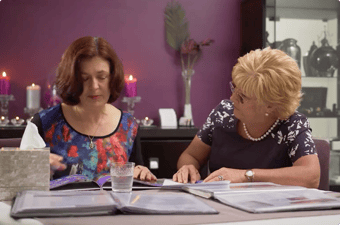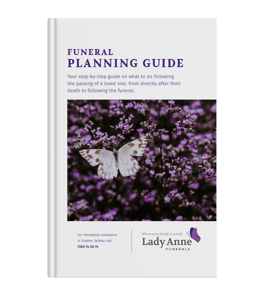Preparing a eulogy during the planning of a funeral is one of the hardest things most of us will have to do. It takes a lot of time and with a million other things on our minds, it's not always easy to find a quiet moment to sit down and write. Even if you do find a few spare moments, the emotional stress of writing can be enough to stop you from preparing the eulogy. Here's a great video that explains in eight steps how to write a eulogy.
1. Talk to people
Talk to as many friends and relatives of your loved one as you can. Ask them what they loved most about the person. You might even find out something that you didn't know about your loved one and this can be a really rewarding experience. See if they have any stories to tell and find out their fondest memories. Perhaps they knew your loved one before you were born or before you met your loved one. Most importantly, try to take some notes so that you won't forget details when you start to write the eulogy.
2. Gather your thoughts
Gather your own thoughts, memories, and stories about the person who passed and jot them down. For some people, this might need to be done in a quiet space without others around. If you don't think this can be done at home, talk a walk to the park or sit in a library where silence is appreciated.
For others, gathering their thoughts and memories is best done in the presence of others. There is nothing wrong with this but you should do whatever makes you the most comfortable and relaxed.
3. Find a theme
Look through your notes for a common theme. Perhaps everyone touched on the person’s generosity, or they all had funny stories to share about what a prankster they were. If you can identify a common theme, consider writing the eulogy based on all the similar stories and thoughts of your loved one. This will help give the speech some nice flow.
4. Get basic information
Add to your notes some basic information about the deceased: age at death, career highlights, biggest achievements, hobbies, and so on. Remember, if you're not sure on any details, check with others who were closed to your loved one. It's always best to be accurate rather than almost sure.
As well, jot down the names of the deceased’s closest survivors. In times of stress, names we know well can go right out of our head.
5. Write a draft
Write a draft, making sure it has a clear beginning, middle, and end. For example, introduce the deceased’s zest for life, tell stories that illustrate it, and close with a favourite saying or appropriate quote. If you're comfortable adding a little humour then do so but of course always avoid saying anything negative. A eulogy is not the time to rehash old arguments or differences.
6. Practice it aloud
Read the draft out loud either by yourself in front of the mirror or with someone listening. The length of the eulogy will vary depending on the religious or non-religious protocol of the funeral, so if you're not sure how long it should be then it is always a good idea to check with someone central to the planning of the funeral.
7. Revise
Make any changes you think are necessary, then ask someone close to the deceased to check your remarks for errors. Having another pair of eyes check over what you have written will save you and the audience from embarrassment as well as giving you peace of mind that everything is correct.
8. Carry a copy
Prepare to give the eulogy from memory, but bring a copy of it with print big enough for you to read comfortably — or for someone else to read in case you are too emotional to do so. Nobody expects you to remember everything by heart so don't be shy about making it easy enough for you to read and find sections of the speech with just a glance.
Elements of this post first appeared on Howcast.









